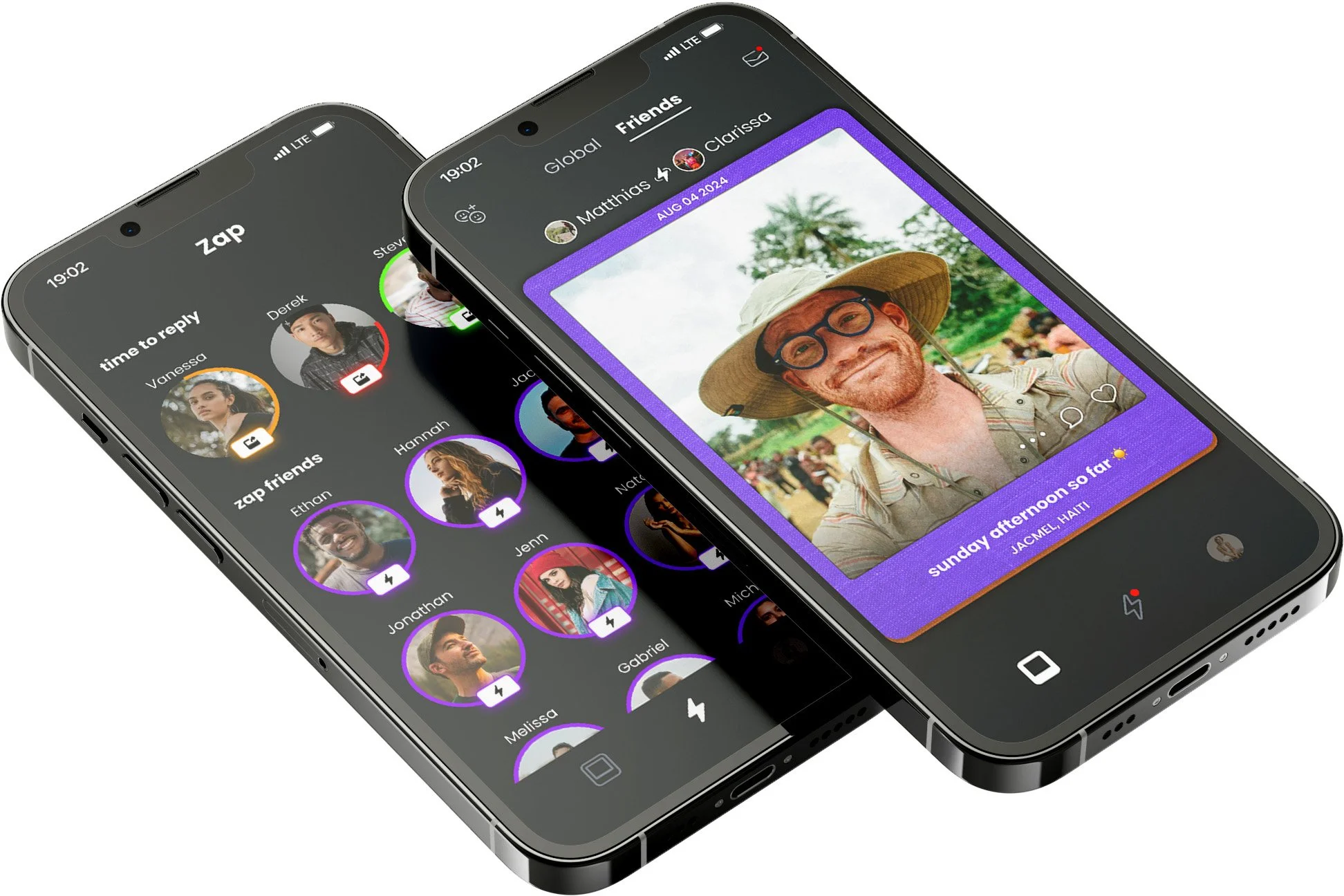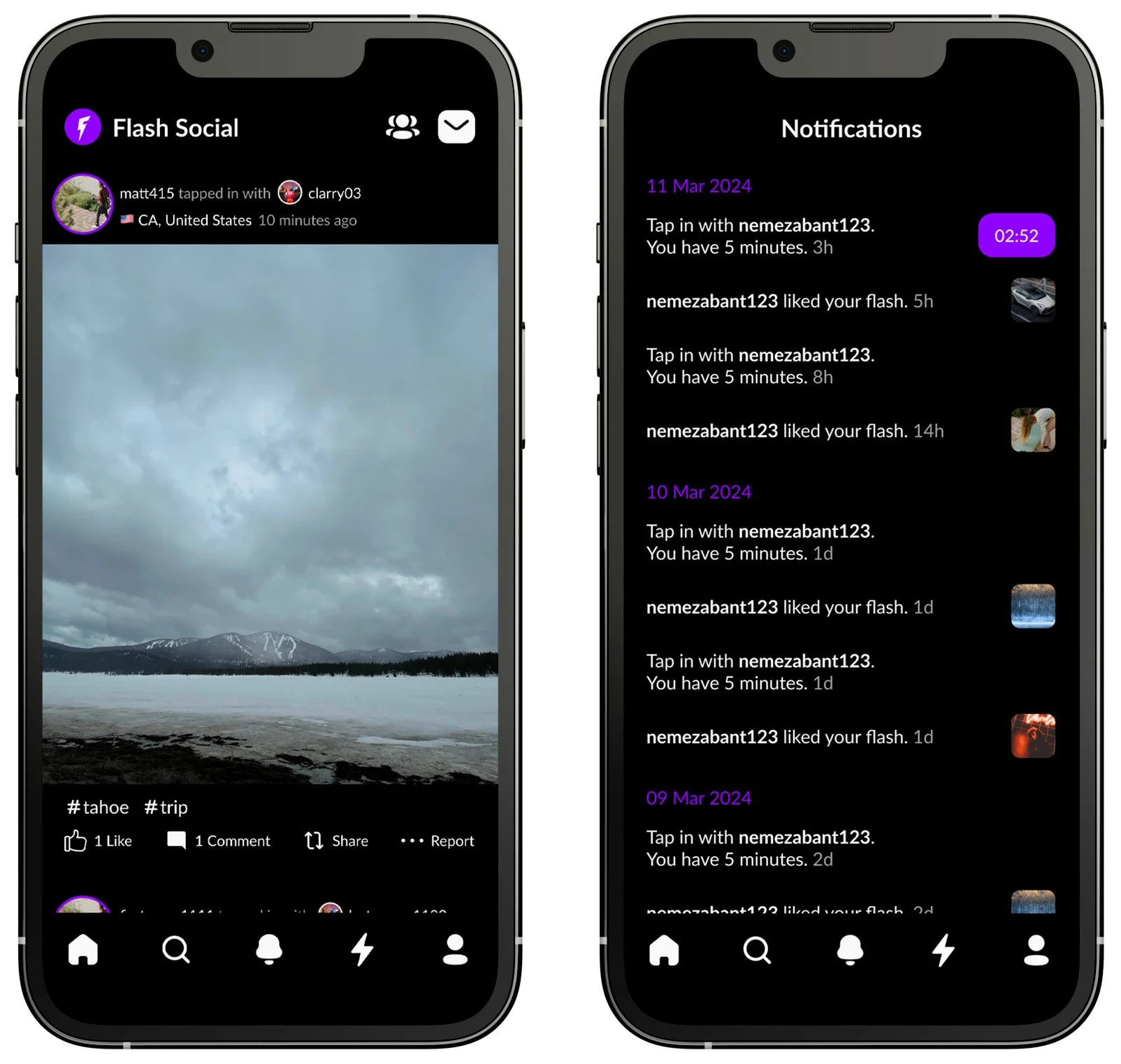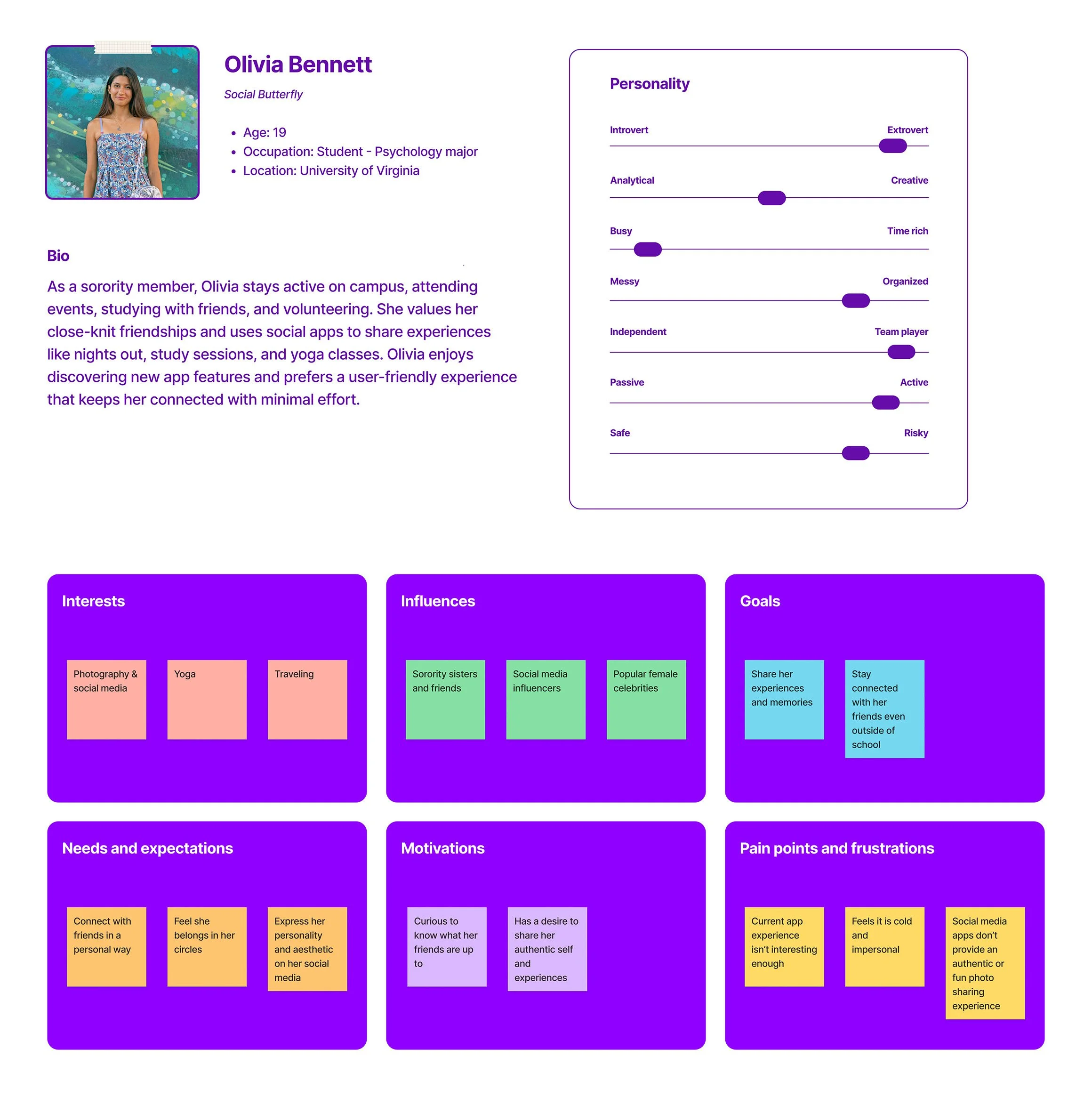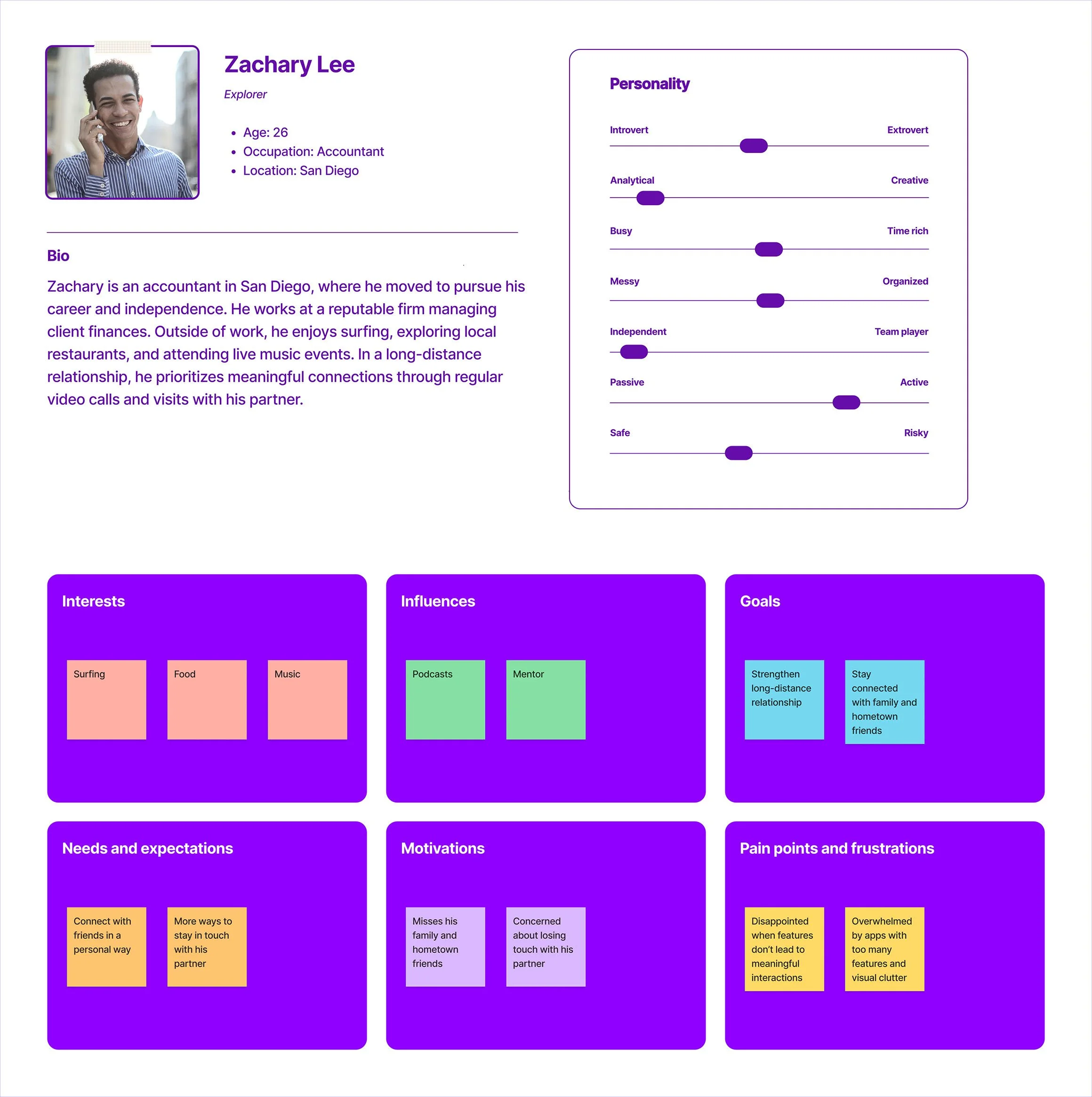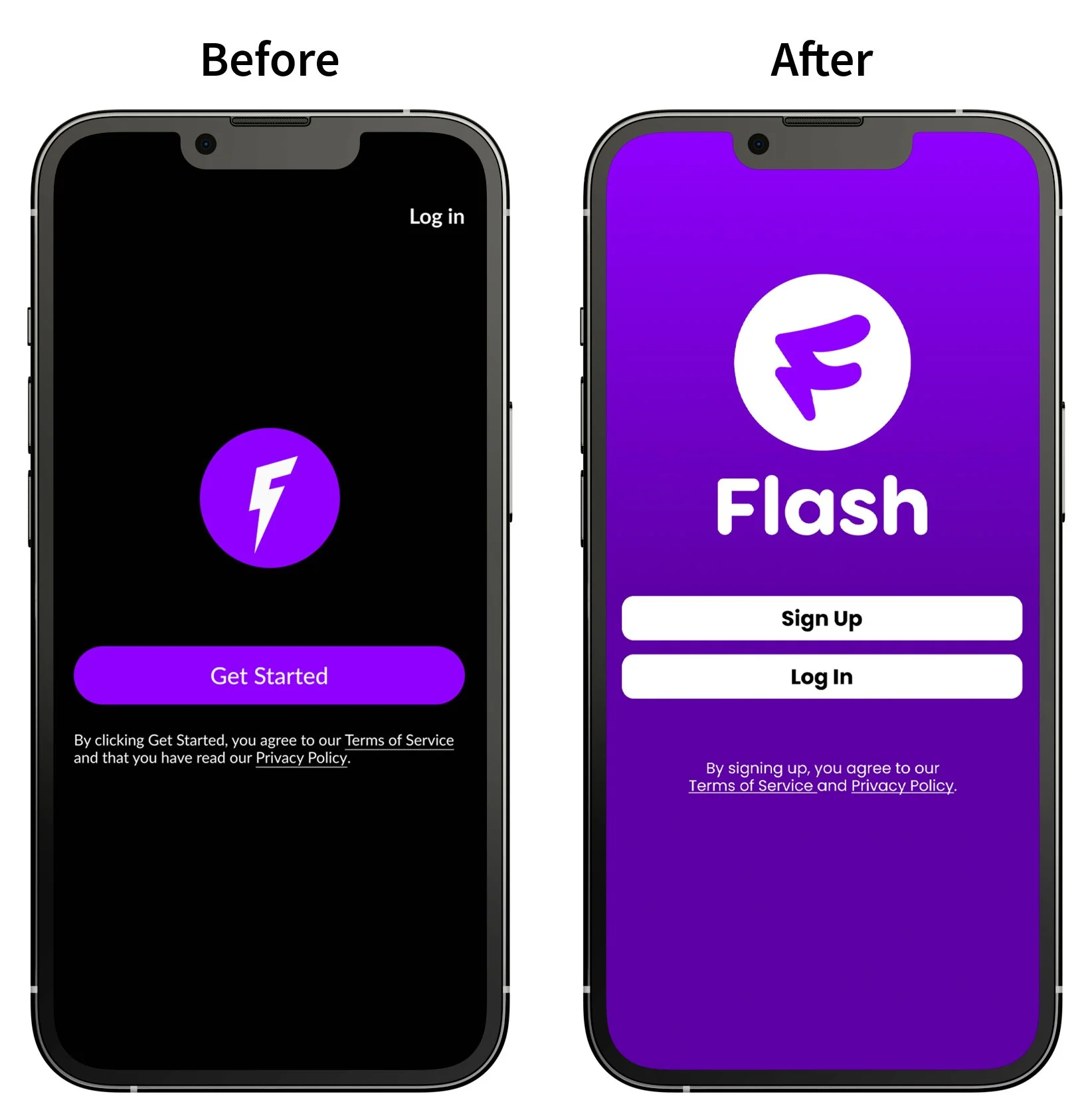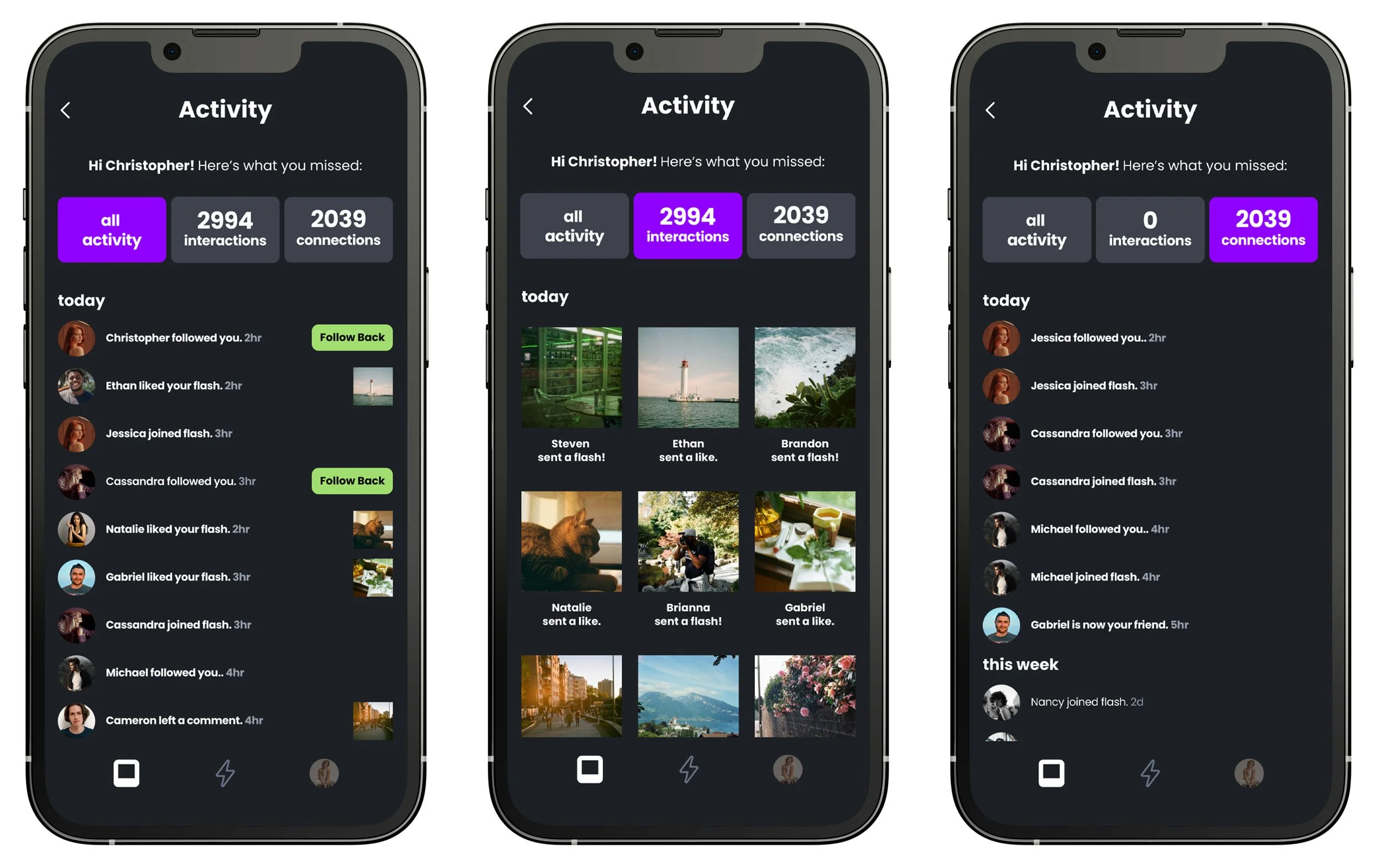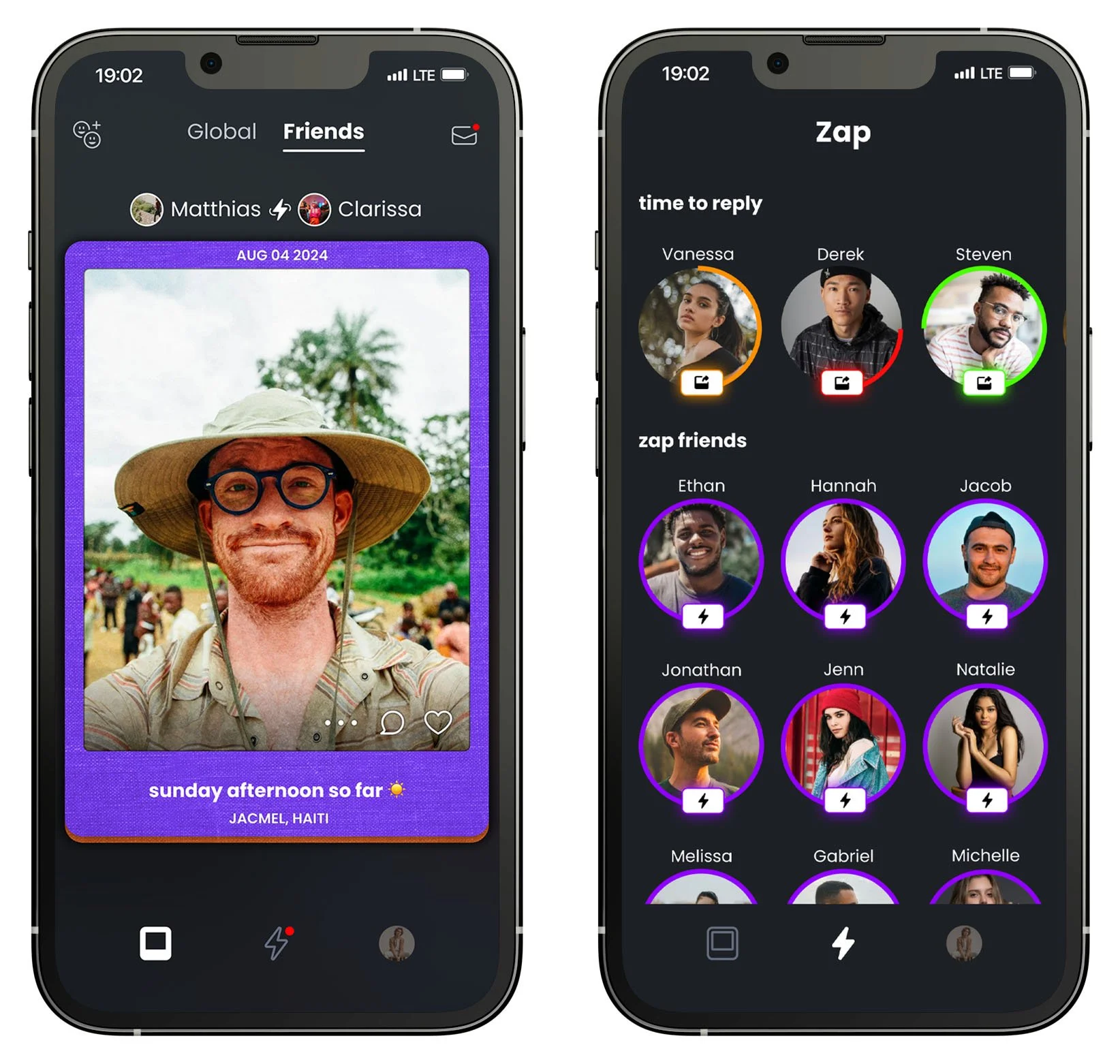Flash App Redesign
Context
Flash is a social media app centered on sharing photos in-the-moment, with a twist: users can only post photos when prompted by other users, upon which they have 5 minutes to post.
Two screens from Version 1 of our app
The Problem
While the existing interface was functional, there was ample room for improvement. We the design team (me and three others) felt the user experience could be much better. In addition, there were only 90+ users on the app, and we were tasked with growing the user base.
Our guiding question was "How might we revamp the product to meet users' needs and expectations, and provide a better user experience?"
Research & Goal Setting
A successful redesign requires basing decisions on users' needs, desires, and pain points. For this, our user research liaison conducted user testing and informal interviews with existing and potential users. Based on findings from these studies, we distilled our target audience into 2 representative personas: a 19 year old sorority student (Olivia), and a 26 year old working adult in a long-distance relationship (Zach).
Users like Olivia want to connect with friends in a personal way, and to share their authentic personality and aesthetic. They find the current app experience kind of uninteresting and cold.
Users like Zachary want to connect with their friends and family in ways different from most other social media apps. In addition, they value meaningful interactions and find most popular apps overwhelming with features and clutter.
Keeping these personas as our guide, we then defined our project goals.
Design Objectives
Redesign the user experience to be more:
friendly, personable, and engaging
intuitive and easily navigable
unique and memorable, especially amongst a sea of competitors
Friendly, personable, and engaging
Working in Figma, our first step was to change the typeface used across our app, replacing Lato with Poppins, a more friendly and streamlined sans serif typeface that is also more readable, due to its taller x-height and wider characters.
As lead designer I was also responsible for redesigning the visual brand identity of Flash, including a new logo, to be in line with our app redesign.
In collaboration with our marketing team and copywriter, we then updated the language used in our interface, to make the tone of our app more fun and engaging. For example, the language for our app’s primary interaction mode was changed from “Tap in” to “Zap”.
In addition, we created a new design system and style guide to ensure consistency in the colors, fonts, shapes, icons, and components used across our interface:
Intuitive and Easily Navigable
Virtually all screens of the app were redesigned to be simpler and easier to navigate. For example, we simplified the primary navigation bar at the bottom of the screen, to having just 3 main pages instead of 5:
Another example of more navigable layouts is the new Activity (notifications) page, categorized so that users can easily find the activity details they want:
Unique and Memorable
As part of our competitive analysis, we looked at the current social media app landscape: Instagram, Snapchat, BeReal, Lapse, Locket, etc. From this research, we realized that our app had great potential, but was held back by the current design. The core of our app is the idea that users prompt each other to share photos. Our goal was to focus on this more personal interaction and highlight it through a creative approach.
We found that Flash’s spontaneous interactions resemble instant film photography. Our goal was to create a unique experience that blends analog and digital elements through personalized posts that mimic instant film. We maintained familiar social media conventions like comments, notifications, and friend invites while adding our standout feature: the zap page, where users can prompt others to send an instant photo (i.e: a "flash").
Collaboration with Developer
Throughout our design process, we worked closely with the developer, documenting our designs in Figma for easy understanding and implementation.
Final Design:
Results
Over the course of our project, we gradually released updates to the app, and grew our user base by 400% as a result. Further user testing, interviews, and screen time analytics can also be studied to inform future design changes and direction.

